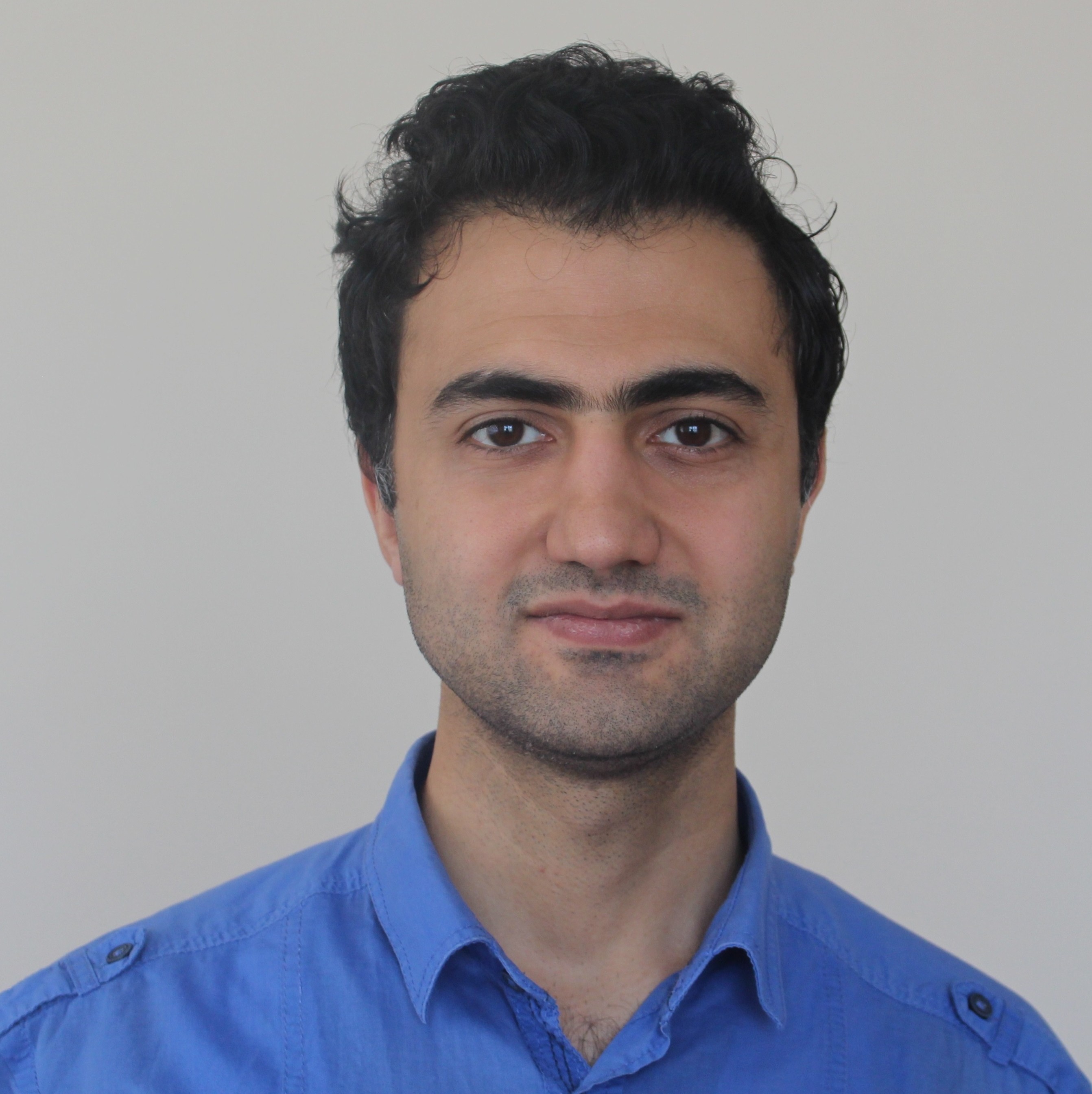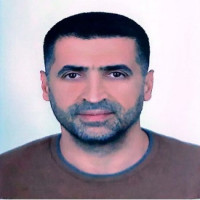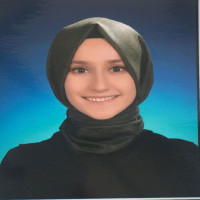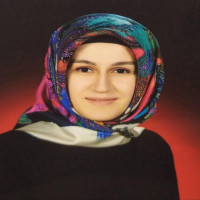Araştırma Makalesi
Issue Editorial Board






 0000-0002-0243-3454
0000-0002-0243-3454


 0000-0002-7910-4595
0000-0002-7910-4595

 0000-0001-9806-291X
0000-0001-9806-291X

 0000-0002-9077-6982
0000-0002-9077-6982




 0000-0002-2620-3901
0000-0002-2620-3901
Aim & Scope
Journal of İnönü University Vocational School of Health Services publishes academic research and studies on both national and international topics, including Public and Environmental Health, Pharmacy, Oral and Dental Health, Pediatric Health, Sports Sciences and Human Health, Medicinal Plants and Human Health, Health Physics, and Biomedical Applications.
As an open-access journal, the Journal of İnönü University Vocational School of Health Services provides free and unrestricted access to its content, supporting the global exchange of scientific knowledge and facilitating collaboration among researchers worldwide.
Author Guidelines
Manuscripts can only be submitted via the journal’s online manuscript submission and evaluation system.
Guidelines for Specific Study Types
Authors must prepare their manuscripts in accordance with the relevant reporting guideline:
- Randomized research studies & clinical trials: CONSORT guidelines (for protocols: SPIRIT guidance)
- Observational research studies: STROBE guidelines
- Diagnostic accuracy studies: STARD guidelines
- Experimental animal studies: ARRIVE guidelines & Guide for the Care and Use of Laboratory Animals, 8th edition
- Behavioral & public health interventions: TREND guidelines
- Case reports: CARE case report guidelines
- Genetic association studies: STREGA guidelines
- Qualitative research: SRQR guidelines
To identify the most suitable guideline for your research, complete the Equator Network questionnaire.
Dear Author,
Please prepare your manuscript according to the Writing Guidelines and the Sample Article Template, and ensure that you review it based on the Author Checklist before uploading it to the system.
Articles that do not comply with the journal’s writing guidelines will be returned to the authors for revision.
- For the Sample Article Template, click here...
- For the Author Checklist, click here...
The following rules must be followed during the manuscript preparation:
- The language of publication in the journal is Turkish and English.
- Submissions to our journal must not have been previously published in any other journal, nor accepted for publication, or be under review elsewhere.
- Articles presented as oral presentations at scientific meetings, whose abstracts have been published, may be considered for publication provided that the meeting's name, date, and location are specified. This information must be mentioned under the Notes section before the References.
- If the manuscript contains quoted text, tables, images, etc., the author must obtain written permission from the copyright holder and authors, and this must be indicated in the article. Legal responsibility regarding this matter lies with the authors.
- When the submission process begins, the necessary documents must be uploaded via the Required Forms section.
- In Turkish articles, the Turkish Language Institute’s Turkish Dictionary and Terminology Dictionary (http://www.tdk.org.tr) should be referred to.
- For experimental and clinical studies, drug research, and certain case reports, compliance with the principles of the Helsinki Declaration is required. Authors must state in the Materials and Methods section that the study was conducted in accordance with these principles and that informed consent was obtained from participants and approval was granted by their institution’s ethics committee. This statement should be written as: "Ethics committee approval was obtained from ……. on …… date with approval number ……."
- Case reports must include information about obtaining informed consent from participants in the manuscript.
- At the end of the manuscript, the Author Contribution Statement, any Acknowledgements, and Conflict of Interest declarations must be included.
- Authors must transfer the copyright of the publication to the Health Services Vocational School Journal. The copyright transfer form is available in the Article Template and Forms section during the submission process and can be downloaded to your computer. The completed form must be uploaded from the same section.
- The submitted manuscript must be scanned for plagiarism (via iThenticate or other plagiarism software), and the plagiarism report must be uploaded to the system.
- A Title Page must be prepared separately and uploaded to the system. The Title Page is available in the Article Template and Forms section, and can be downloaded to your computer. The completed form must be uploaded again from the same section. Author names and contact details should only appear on the title page.
- To protect the peer review process, information about the authors, the ethics committees from which approval was obtained, and institutions should not be included in the main text of the manuscript. In the Materials and Methods section and other parts, such details should be written as XXXX. After the peer review process and upon acceptance for publication, these values should be specified clearly in the final manuscript.
FORMS:
ARTICLE STRUCTURE
Manuscripts submitted for publication to the journal must be prepared in the following order:
For Turkish Articles:
• Turkish and English title
• Turkish abstract (ÖZ) and keywords
• English abstract (ABSTRACT) and keywords
• GİRİŞ
• GEREÇ VE YÖNTEM
• BULGULAR; TARTIŞMA
• SONUÇ (ya da SONUÇ VE ÖNERİLER)
• KAYNAKLAR
For English Articles:
• English and Turkish title
• English abstract (ABSTRACT) and keywords
• Turkish abstract (ÖZ) and keywords
• INTRODUCTION
• MATERIALS AND METHODS
• RESULTS; or RESULT AND DISCUSSION
• CONCLUSION
• (The above headings can be arranged in accordance with the manuscript structure)
• REFERENCES
WRITING GUIDELINES
Manuscripts must be prepared as Microsoft Word® documents.
Page Layout:
The manuscript should be formatted in Times New Roman font, black color, with 1.5 line spacing, and 2.5 cm margins on all sides. The first page, which includes the Turkish title, abstract, and keywords, should be numbered as page 1, and all subsequent pages should be numbered consecutively in the bottom right corner.
A separate title page must also be prepared and uploaded to the system as a title page. The title page should include the authors' full names, academic titles, correspondence addresses, and email addresses beneath the article title. (Due to the double-blind peer review process, the manuscript should not contain any institution names, author identifiers, or any information that could reveal the authors' identities or institutions.)
A) Titles:
• The article title should be in Times New Roman, 12-point font, in uppercase, and bold. The English title should appear below the Turkish title, in Times New Roman, 12-point font, with the first letter capitalized and bold. Abbreviations should not be used in the title.
• Section headings should be in Times New Roman, 12-point font, bold, and with the first letter capitalized.
B) Abstracts and Keywords:
• Abstracts should be written in both Turkish and English. At the end of each abstract, there should be a list of at least 2 and no more than 5 keywords for each language. Keywords should be separated by commas (,) and each word should start with a capital letter in both the abstract and the Öz. The keywords must be listed in alphabetical order.
• The Öz and Abstract titles should be in bold, Times New Roman, 12-point font. The text of the abstract should be written in Times New Roman, 10-point font, single-spaced.
• The Turkish abstract should not exceed 200 words, and the English abstract should also not exceed 200 words in length.
C) Main Text:
• The main text should be formatted in Times New Roman font, 12-point size, with 1.5 line spacing. Decimal values in the text should be written using a dot (e.g., 0.005). The main text is organized under the following headings: Introduction, Materials and Methods, Results, and Discussion. In the Introduction section, the basic information and rationale for the study should be briefly discussed, with the study's objective clearly stated in the last paragraph. The Materials and Methods section should be organized into subheadings such as research group, tools, procedures, and statistical analysis if necessary. This section should be written clearly enough for someone unfamiliar with the study to understand. The Results section should summarize the findings of the study, with key results supported by tables and figures if necessary. In the Discussion section, the results should be discussed in the context of related domestic and international studies, focusing on the original findings, rather than a general review. Abbreviations should be introduced in parentheses the first time they appear in the text and should be used consistently throughout. For internationally used abbreviations, the "Scientific Style and Format: The CBE Manual for Authors, Editors, and Publishers" can be referred to. Anatomical terms should be used as they appear in Latin. Terms that have become common in medical language should be written according to Turkish spelling rules. Terms written in English or other foreign languages should be placed in quotation marks. Avoid using foreign words that have a Turkish equivalent. Generic or chemical names of drugs should be used.
D) Acknowledgements:
• The authors may include a brief acknowledgment for individuals who contributed to the article at a level not qualifying for authorship, but whom they believe should be recognized. The contributions (e.g., financial support, technical assistance) of these individuals should be clearly stated (e.g., "scientific consultancy," "draft revision," "data collection," "participation in clinical research").
E) Figures, Images, Tables, and Graphs:
• Figures, images, tables, and graphs should appear in the text where they are referenced. Images/photos should be in color, with good contrast and clarity, showing details. The table text should be in Times New Roman, 10-point size, and single-spaced. They must follow APA 6 guidelines. For print quality, tables, figures, graphs, images/photos should be submitted in editable formats (e.g., tif, png, jpg, or gif files) with an approximate pixel size of 500x400, 8 cm width, and 300 dpi resolution. Abbreviations used in the figures, images, tables, and graphs should be explained in their respective captions. If previously published figures, images, tables, or graphs are used, written permission must be obtained, and this permission should be acknowledged in the figure/image/table/graph caption.
• Table captions should be above the table, and figure and graph captions should be below the figure/graph. All captions should be in Times New Roman, 10-point font, with the first letter capitalized (e.g., "Table 1." and "Figure 1."). Tables and figures should be aligned to the left of the page.
E) REFERENCES
When writing the references, the heading should be bold, in Times New Roman, 10-point size, and in uppercase. The references themselves should be written in Times New Roman, 10-point size, with single line spacing.
APA CITATION STYLE AND REFERENCING METHOD
IN-TEXT CITATIONS:
When citing sources in the text, the following rules must be followed:
To ensure proper citation formatting, the source information must be complete and accurate, enabling readers to access the referenced material. Each journal should adopt an international standard for citation formatting and apply these standards consistently.
It is important to be selective in the sources used and only reference those that are directly related to the topic of the paper. APA 6th edition citation style should be followed for in-text citations.
For managing references in the text, programs like EndNote® or MS Office source management tools can be helpful.
Citation of Authors in the Text:
1. Single Author:
o According to Baysal (1982)
o (Baysal, 1982)
2. Two Authors:
o According to Wegener and Petty (1994)
o (Wegener & Petty, 1994)
3. Three to Five Authors:
o The first time you reference, list all authors:
(Kernis, Cornell, Sun, Berry, & Harlow, 1993)
o Subsequent citations should only list the first author followed by "et al."
(Kernis et al., 1993)
4. Six or More Authors:
o Only list the first author followed by "et al." for all citations:
Harris et al. (2001)
(Harris et al., 2001)
5. When Author is Unknown:
o If no author is mentioned, use the first or two words of the title in parentheses and quotation marks:
("Die Pisa-Analyse", 2001)
6. When the Author is an Organization or Government Agency:
o If the organization is well-known, use the abbreviation in subsequent citations.
First citation: (Mothers Against Drunk Driving [MADD], 2000)
Subsequent citation: (MADD, 2000)
7. Citing Multiple References in the Same Parentheses:
o These should be arranged alphabetically and separated by semicolons:
(Akar, 2010; Çalışkan, 2008; Dinçer & Kolaşin, 2009; Engin-Demir, 2009; Tunç, 2007)
8. Same Last Name Authors:
o To avoid confusion, include the first initial:
(E. Johnson, 2001; L. Johnson, 1998)
9. Citing Multiple Works by the Same Author in the Same Year:
o If the same author has multiple works published in the same year, differentiate them by adding a, b, or c after the year:
Berndt (1981a)
10. Personal Communications:
o If information is derived from personal communication (interviews, letters, emails), the name of the person and the date of communication should be included, but such communications should not be listed in the reference list:
(N. AlSayyad, personal communication, March 25, 2012)
INSTITUTION
1. First citation in parentheses:
o (Institution Name [Abbreviation of Institution Name], Year)
o Example: (Türk Dil Kurumu [TDK], 2013)
2. Second and subsequent citations in parentheses:
o (Abbreviation of Institution Name, Year)
o Example: (TÜBİTAK, 2013)
3. First citation in a sentence:
o Institution Name (Abbreviation of Institution Name, Year)
o Example: Türkiye Dil Kurumu (TDK, 2013)
4. Second and subsequent citations in a sentence:
o Abbreviation of Institution Name (Year)
o Example: TDK (2013)
PARENTHESES USAGE
When adding additional information in parentheses, it should appear before the year citation:
• Before the year citation:
o Akyurt’tan (2017) bir yıl önce...
o Akyurt ve Aykan’a (2019) göre…
REFERENCE WRITING: BASIC RULES
Journals and Periodicals:
• Basic Format:
(Journal names, book titles, thesis titles, conference names, etc., should be italicized)
SINGLE-AUTHOR WORKS:
• Article:
Author, A. (Year). Article title. Journal Name, volume no (issue no), page(s). DOI no.
Example:
Çırak, Z.D. (2018). Investigation of the thermal and microstructural changes of CuAlNiNb quaternary shape memory alloys by different niobium amounts. The European Physical Journal Plus, 133(7), 2018-12150. doi: 10.1140
• Book:
Author, A. (Year). Book title. Place: Publisher.
Example:
Güzelyurt, T. (2022). Meraklı balık Moli-Gizli kapı. Ankara: Perseus.
TWO OR MORE AUTHORS' WORKS
• Article:
Author, A. & Author, B. (Year). Article title. Journal Name, volume no (issue no), page(s). DOI no.
Example:
Güzelyurt, T. & Özkan, Ö. (2019). Early childhood environmental education: An examination of children's books. İlköğretim Online (electronic), 18(1), 20-30. https://doi.org/10.17051/ilkonline.2019.527146
• Kernis, M. H., Cornell, D. P., Sun, C. R., Berry, A., Harlow, T. & Bach, J. S. (1993). There's more to self-esteem than whether it is high or low: The importance of stability of self-esteem. Journal of Personality and Social Psychology, 65, 1190-1204.
• Book:
Author, A. & Author, B. (Year). Book title. Place: Publisher.
Example:
Akyurt, T. & Yurtkan, T. (2020). Akademi kitaplar serisi. Ankara: Seçkin.
• For works with more than seven authors, list the first six authors followed by an ellipsis and the last author’s name. Do not include more than seven names:
Example:
Miller, F. H., Choi, M. J., Angeli, L. L., Harland, A. A., Stamos, J. A., Thomas, S. T., ... Rubin, L. H. (2009). Web site usability for the blind and low-vision user. Technical Communication, 57, 323-335.
Articles in journals with only the volume number:
• Harlow, H. F. (1983). Fundamentals for preparing psychology journal articles. Journal of Comparative and Physiological Psychology, 55, 893-896.
Articles in journals with both issue and volume numbers:
• Scruton, R. (1996). The eclipse of listening. The New Criterion, 15(3), 5-13.
Example:
Quader, I. N., Kok, M. & Cirak, Z. D. (2020). The effects of substituting Sn for Ni on the thermal and some other characteristics of NiTiSn shape memory alloys. Journal of Thermal Analysis and Calorimetry, 3(2), 103-104.
When the organization is the author:
• American Psychological Association. (2003).
When the author is unknown:
• Merriam-Webster's collegiate dictionary (10th ed.). (1993). Springfield, MA: Merriam-Webster.
For multiple works by the same author, list the works in chronological order:
• Berndt, T. J. (1981).
Berndt, T. J. (1999).
• If the author is listed as a single author in one work and as a co-author in another, the single-author work should come first:
Berndt, T. J. (1999). Friends' influence on students' adjustment to school. Educational Psychologist, 34, 15-28.
Berndt, T. J. & Keefe, K. (1995). Friends' influence on adolescents' adjustment to school. Child Development, 66, 1312-1329.
If the author has multiple works with different co-authors, the listing should be alphabetized by the second or subsequent author's last name:
• Wegener, D.T., Kerr, N. L., Fleming, M. A. & Petty, R. E. (2000). Flexible corrections of juror judgments: Implications for jury instructions. Psychology, Public Policy, and Law, 6, 629-654.
• Wegener, D. T., Petty, R. E. & Klein, D. J. (1994). Effects of mood on high elaboration attitude change: The mediating role of likelihood judgments. European Journal of Social Psychology, 24, 25-43.
If a writer has published two or more works in the same year, use letters (a, b, c):
• Berndt, T. J. (1981a). Age changes and changes over time in prosocial intentions and behavior between friends. Developmental Psychology, 17, 408-416.
• Berndt, T. J. (1981b). Effects of friendship on prosocial intentions and behavior. Child Development, 52, 636-643.
For prefaces, introductions, and conclusions, cite as a book chapter:
• Kumar, R. & Hill, D. (2009). Introduction: Neoliberal Capitalism and Education. In D. Hill & R. Kumar (Eds.), Global Neoliberalism and Education and its Consequences (pp. 1-11). New York: Routledge.
Magazine Articles:
• Henry, W. A. (1990, April 9). Making the grade in today's schools. Time, 135, 28-31.
Newspaper Articles (printed):
• Schultz, S. (2005, December 28). Calls made to strengthen state energy policies. The Country Today, pp. 1A, 2A.
Letter to the Editor:
• Moller, G. (2002, August). Ripples versus rumbles [Letter to the editor]. Scientific American, 287(2), 12.
Book Review:
• Baumeister, R. F. (1993). Exposing the self-knowledge myth [Book review of The selfknower: A hero under control, by R. A. Wicklund & M. Eckert]. Contemporary Psychology, 38, 466-467.
Books in the Bibliography:
• Basic format:
Author, A. A. (Publication year). Title of the work. Place: Publisher.
Example:
Cuban, L. (2001). Oversold and underused: Computers in the classrooms. Cambridge: Harvard University Press.
Edited Books:
• Duncan, G. J. & Brooks-Gunn, J. (Eds.). (1997). Consequences of growing up poor. New York, NY: Russell Sage Foundation.
Edited Books (if the work is written by a person or group):
• Plath, S. (2000). The unabridged journals. K. V. Kukil (Ed.). New York, NY: Anchor.
Translation:
• Laplace, P. S. (1951). A philosophical essay on probabilities (F. W. Truscott & F. L. Emory, Trans.). New York, NY: Dover. (Original work published 1814).
Important Note: When citing a re-published work, both dates should be given:
Laplace (1814/1951).
For editions different from the first edition:
• Helfer, M. E., Kempe, R. S. & Krugman, R. D. (1997). The battered child (5th ed.). Chicago, IL: University of Chicago Press.
A Chapter or Article in an Edited Book:
• Author, A. A. & Author, B. B. (Publication year). Chapter/article title. In A. Editor & B. Editor (Eds.), Book title (pp. page numbers). Place: Publisher.
Example:
O'Neil, J. M. & Egan, J. (1992). Men's and women's gender role journeys: A metaphor for healing, transition, and transformation. In B. R. Wainrib (Ed.), Gender issues across the life cycle (pp. 107-123). New York, NY: Springer.
Multivolume Work:
• Wiener, P. (Ed.). (1973). Dictionary of the history of ideas (Vols. 1-4). New York, NY: Scribner's.
Encyclopedia Entry:
• Bergmann, P. G. (1993). Relativity. In The New Encyclopedia Britannica (Vol. 26, pp. 501-508). Chicago, IL: Encyclopedia Britannica.
Published Thesis:
• Surname, F. N. (Year). Thesis title. (Doctoral dissertation). Database name. (Accession or Order Number)
Unpublished Thesis:
• Surname, F. N. (Year). Title of the doctoral thesis. (Unpublished doctoral dissertation). Institution name, Location.
Example:
Köprülü, D. (1994). An investigation on the use of book collections in university libraries. Unpublished doctoral dissertation, Hacettepe University, Ankara.
Government Publications:
• National Institute of Mental Health. (1990). Clinical training in serious mental illness (DHHS Publication No. ADM 90-1679). Washington, DC: U.S. Government Printing Office.
Articles in Online Periodicals:
Articles from online journal publications with a DOI:
Author, A. B. (publication year). Article title. Journal Name (Italicized), volume number, page(s). doi:0000000/000000000000 or http://dx.doi.org/10.0000/0000
• Brownlie, D. (2007). Toward effective poster presentations: An annotated bibliography. European Journal of Marketing, 41, 1245-1283. doi:10.1108/03090560710821161
• Wooldridge, M.B., & Shapka, J. (2012). Playing with technology: Mother-toddler interaction scores lower during play with electronic toys. Journal of Applied Developmental Psychology, 33(5), 211-218. http://dx.doi.org/10.1016/j.appdev.2012.05.005
Articles from online periodicals without a DOI:
Author, A. A. (publication year). Article title. Online Journal Name (Italicized), volume number (if applicable, issue number) (...) Retrieved on xxxxxx from http://www.someaddress.com/full/url/
In English Article:
Author, A. A. (publication year). Article title. Online Journal Name (Italicized), volume number (if applicable, issue number) (...) In xxxxx retrieved from http://www.someaddress.com/full/url/
• Bernstein, M. (2002). 10 tips on writing the living Web. A List Apart: For People Who Make Websites, 149. Retrieved on January 15, 2012, from http://www.alistapart.com/articles/writeliving
• Kenneth, I. A. (2000). A Buddhist response to the nature of human rights. Journal of Buddhist Ethics, 8. In January 15, 2012, retrieved from http://www.cac.psu.edu/jbe/twocont.html.
Online Newspaper Articles:
Author, A. A. (Year, Day Month). Article title. Newspaper Name. Retrieved from http://www.someaddress.com/full/url/
• Parker-Pope, T. (2008, May 6). Psychiatry handbook linked to drug industry. The New York Times. Retrieved on January 15, 2012, from http://well.blogs.nytimes.com
Electronic Books:
• De Huff, E. W. (n.d.). Taytay’s tales: Traditional Pueblo Indian tales. Retrieved on January 15, 2012, from http://digital.library.upenn.edu/women/dehuff/taytay/taytay.html
• Davis, J. (n.d.). Familiar birdsongs of the Northwest. Retrieved on January 15, 2012, from http://www.powells.com/cgi-bin/biblio?inkey=1-9780931686108-0
Printed Interview Publication:
Çelik, Z. (Interviewer), & AlSayyad, N. (Interviewee). (2012). On neoliberalism and urban inequalities [Interview transcript]. İdealKent, (7), 10-20.
Online Lecture Notes and Slide Presentations:
• Hallam, A. Duality in consumer theory [PDF document]. Lecture Notes Online Website: Retrieved on January 15, 2012, from http://www.econ.iastate.edu/classes/econ501/Hallam/index.html
• Roberts, K. F. (1998). Federal regulations of chemicals in the environment [PowerPoint slides]. Retrieved on January 15, 2012, from http://siri.uvm.edu/ppt/40hrenv/index.html
Non-Periodic Web Documents, Pages, or Reports:
The main principle in such cases is to find and use the name of the file or document's owner.
Author, A. A. (publication date). File title. Retrieved on January 15, 2012, from http://Web address
• Angeli, E., Wagner, J., Lawrick, E., Moore, K., Anderson, M., Soderland, L., & Brizee, A. (2010, May 5). General format. Retrieved on January 15, 2012, from http://owl.english.purdue.edu/owl/resource/560/01/
Ethical Principles and Publication Policy
PUBLICATION ETHICS
Journal of İnönü University Vocational School of Health Services adheres to the guidelines of several organizations, including the Committee on Publication Ethics (COPE), the Principles of Transparency and Best Practice in Scholarly Publishing (joint statement by COPE, DOAJ, OASPA, WAME), and the ICMJE Recommendations for the Conduct, Reporting, Editing, and Publication of Scholarly Work in Medical Journals, promoting transparency, integrity, and best practices in scholarly publishing.
Medical research involving human subjects must comply with the WMA Declaration of Helsinki (2013), ensuring informed consent, privacy protection, and participant safety. The journal also follows WAME’s Recommendations on Publication Ethics for Medical Journals, addressing conflicts of interest, research misconduct, and the peer review process to maintain integrity and transparency.
PUBLICATION PRINCIPLES
- The publication language of the journal is Turkish and English.
- Articles submitted for publication in our journal must not have been published elsewhere, not accepted for publication, or under review for publication in any other journal.
- Papers presented at scientific meetings, whose abstracts have been published, will be considered for publication as long as the name, date, and location of the meeting are provided.
- If there are quoted texts, tables, images, etc., in the submitted work, the author must obtain written permission from the copyright holder and the authors and specify this in the article. The legal responsibility regarding this matter lies with the authors.
- When the submission process begins, the required forms will be visible in the "required forms" section, and you will be able to download the file to your computer. You must also upload the signed version of the file via the same section.
- In Turkish articles, the Turkish Language Institute’s Turkish Dictionary and Terminology Dictionary (http://www.tdk.org.tr) should be referred to.
- A DOI number will be assigned to every article published in the journal, and no fee will be charged to the authors.
- If “Ethics Committee Approval” is required for the article, the authors must state in the "Materials and Methods" section that they have obtained ethics committee approval.
- Submitted articles will be queued for publication upon approval by the Editorial Board.
- The similarity report must be uploaded to the system with the submission of the article and articles that do not comply with the publication ethics are not evaluated and rejected.
- Journal of İnönü University Vocational School of Health Services does not charge any processing or publication fees for the articles submitted.
Ethics Committee Approval and Informed Consent
Ethical standards are upheld in both human and animal experiments. Authors must provide evidence of approval from a local Ethics Committee when required. Animal research should be conducted humanely, with clear reporting of anesthetics and analgesics used. Ethical standards must align with the WMA’s Code of Ethics (Declaration of Helsinki) for human studies and EU Directive 2010/63/EU for animal research. A statement of ethics committee approval must be included in the ‘Materials and Methods’ section, in accordance with the ICMJE Recommendations. The journal will not consider any manuscript deemed ethically unacceptable.
If a manuscript is submitted to Journal of İnönü University Vocational School of Health Services without ethics committee approval, the journal will review it according to COPE's Research, Audit, and Service Evaluations guideline. This guideline helps the journal assess the risks and ethical concerns of publishing research lacking ethics committee approval, ensuring that the manuscript meets ethical standards despite the absence of formal approval.
Authors must provide detailed information on the ethical treatment of animals in their manuscript, including measures taken to prevent pain and suffering. The ARRIVE checklist can be used to help authors present this information clearly and comprehensively.
- For research involving human subjects, a statement confirming that written and/or verbal informed consent was obtained from all participants must be included. Informed consent forms should be retained for future reference.
- For studies involving children under 18, consent must be obtained from a parent or guardian, as children may not fully understand the risks and benefits of research.
- In cases of surveys or interviews, authors must confirm that participants gave informed consent for participation and, if applicable, for recording personal details. Any identifiable quotations or statements must be de-identified unless explicit consent for attribution is provided.
- Details of informed consent should be provided in the Material and Methods section, along with other relevant research procedures. Authors must protect participants' anonymity and privacy, particularly regarding photographs that may reveal identities. Signed consent releases for photographs should be obtained, and the approval for publication must be documented in the Methods section.
Plagiarism and Ethical Misconduct
All submissions undergo multiple screenings during the peer review and/or production processes using similarity detection software. When citing previous works, ensure that all material is properly referenced. Copying text, tables, or illustrations from any source (journal articles, books, theses, electronic media, etc.) and presenting them as one's own is considered plagiarism, even if a reference is provided. Listing the source in the 'References' section does not absolve authors of responsibility for plagiarism.
All articles submitted to the Journal of İnönü University Vocational School of Health Services must be scanned with similarity-checking software such as iThenticate (http://www.ithenticate.com/) or Turnitin (https://www.turnitin.com/), and the similarity report must be uploaded to the system. The similarity rate must be below 20%, and articles with a similarity rate lower than 20% will be considered for review. Articles exceeding this rate will be rejected, and if plagiarism or unethical behavior is detected during the publication process, the article will be rejected for publication.
Authors are strongly encouraged to avoid any form of plagiarism or ethical misconduct, as illustrated below:
- Citation Manipulation: Refers to inflating citation counts through self-citation, excessive citation of the same journal, or citation stacking, which distorts academic recognition.
- Self-Plagiarism (Text Recycling): Involves reusing sections or sentences from an author's prior work without proper citation, constituting a form of plagiarism.
- Salami Slicing: The unethical practice of publishing multiple articles using the same data set, hypotheses, and methods from a single study.
- Data Fabrication: The creation of false data not supported by actual research or experiments, considered a serious breach of research integrity.
- Data Manipulation/Falsification: Involves altering data, such as modifying images or removing outliers, to mislead or misrepresent findings.
In cases of suspected misconduct (e.g., plagiarism, citation manipulation, or data falsification), the Editorial Board will follow COPE guidelines to ensure fair, transparent, and consistent handling of allegations.
COPYRIGHT POLICY
Articles submitted to the Journal of İnönü University Vocational School of Health Service must be accompanied by a Copyright Agreement and an Author Contribution Form. By signing this form, authors protect the copyright of their work and, if the article is accepted for publication by the Journal of İnönü University Vocational School of Health Service, the article will be licensed under the Creative Commons Attribution-NonCommercial 4.0 International License (CC BY-NC 4.0). This allows third parties to share and adapt the content for non-commercial purposes, provided the original work is properly credited.
ADVERTISING POLICY
Journal of İnönü University Vocational School of Health Services accepts digital advertisements on its website, provided they are approved by the journal's Editorial Board and management. All advertisements must be clearly labeled as such. Advertisers have no influence on editorial decisions or advertising policies.
For advertising inquiries, please contact the Editorial Office (inueditorial@inonu.edu.tr).
PEER REVIEW PROCESS
All manuscripts submitted to the Journal of İnönü University Vocational School of Health Services undergo a double-anonymized peer-review process, ensuring anonymity between authors and reviewers. At least two independent expert reviewers evaluate each submission to ensure impartiality.
The editorial office makes initial technical checks to confirm that the manuscript meets the journal's guidelines. Non-compliant submissions will be returned to authors for revisions. The Editor in Chief assesses manuscripts that meet the guidelines for suitability in terms of scope and quality and may be rejected at this stage.
Field Editors are tasked with selecting reviewers for suitable manuscripts. They may choose to reject, continue the review, or request revisions before further review. Reviewers' reports inform the Field Editors to reassess the final recommendation and revise manuscripts.
The Editor in Chief makes the final decision on all submissions. In case of delays, authors are notified and have the option to withdraw their manuscript. After peer review, authors receive the reviewers' reports and editorial decisions, which are confidential and not publicly shared.
Authors may suggest reviewers, but the handling editor has the final say on their selection. Peer reviewers must adhere to COPE's Ethical Guidelines and disclose any conflicts of interest before agreeing to review. Any suspected conflicts or manipulation during the process will be addressed according to COPE guidelines.
External editors will be recruited based on their qualifications and peer-review experience to ensure impartiality for submissions from editorial board members. Reviewers and editors must maintain confidentiality and disclose conflicts of interest to ensure a fair and transparent process.
If an article's review deviates from standard procedures, the review type will be noted on the article for transparency.
REVISION PROCESS
Manuscripts requiring "minor revision" or "major revision" will receive a decision letter from the Editor-in-Chief, outlining the reviewers’ and editors’ comments along with a deadline for resubmission.
Submission of Revised Manuscripts
Authors must submit a detailed "Response to the Reviewers" document along with the revised manuscript. This document should address each reviewer’s comment individually, explaining the revisions made and specifying the corresponding line numbers in the manuscript. Additionally, an annotated version of the main document highlighting the changes should be provided.
Timeliness
Revised manuscripts must be submitted within the deadline stated in the decision letter. Missing the deadline may result in the rejection of the revision. If additional time is required, authors must request an extension before the original deadline expires.
AUTHORSHIP POLICY
Journal of İnönü University Vocational School of Health Services follows the International Committee of Medical Journal Editors (ICMJE) guidelines for authorship. To qualify as an author, individuals must meet all four of the following criteria:
- Substantial contributions to the conception or design of the work, or the acquisition, analysis, or interpretation of data; AND
- Drafting or critically revising the work for important intellectual content; AND
- Final approval of the version to be published; AND
- Accountability for all aspects of the work, ensuring accuracy and integrity.
Author Contributions and Transparency
Authors should be able to identify each co-author’s contributions and ensure proper acknowledgment. The Contributor Roles Taxonomy (CRediT) may be used during submission to specify individual contributions, as agreed upon by all authors. The final article will include an authorship contribution statement reflecting these roles.
Authors must have confidence in the integrity and ethical conduct of their co-authors’ work, ensuring that the research, data, and results presented are accurate and reliable.
Acknowledgment of Non-Authors
Individuals who do not meet all four authorship criteria should not be listed as authors but may be acknowledged on the title page for their contributions to the research.
Authorship Ethics and Misconduct
The journal does not accept ghost, guest, or honorary authorship. If misconduct is suspected, the submission will be suspended, and the relevant COPE flowchart and COPE Policy on authorship and contributorship will be followed. All authors must complete the Authorship Contribution Form to confirm adherence to ICMJE criteria.
Change of Authorship
Requests for changes in authorship, including the addition, removal, or reordering of authors, must be submitted to the editorial office with a signed letter explaining the reason for the change. The letter must be signed by all listed authors, including those being removed.
The Editorial Board will review all requests in accordance with COPE flowchart guidelines, ensuring a transparent and consistent process that upholds the integrity of the research and the credibility of all contributors.
The Role of Artificial Intelligence (AI) in Manuscript Preparation
Journal of İnönü University Vocational School of Health Services follows the Committee on Publication Ethics (COPE) guidelines regarding the use of AI and AI-assisted technologies in manuscript preparation. Authorship entails responsibilities that only humans can fulfill, and authors are accountable for the originality and integrity of their work.
AI tools may be used for language editing; however, their use must be explicitly acknowledged in the manuscript. AI cannot be listed as an author, as authorship requires intellectual contributions, critical reasoning, and accountability—elements that AI cannot provide. Maintaining these standards is essential to preserving the quality and originality of published research.
Conflict of Interest Policy
Journal of İnönü University Vocational School of Health Services adheres to international editorial standards, including those set by ICMJE, COPE, WAME, and other organizations, to ensure transparency and integrity in the publication process.
A conflict of interest arises when an author, reviewer, or editor has competing interests—such as financial, personal, political, or academic—that could unduly influence their objectivity in manuscript submission, review, or editorial decisions.
Disclosure Requirements:
All contributing authors must complete and submit the ICMJE Conflict of Interest Disclosure Form. Any conflicts, whether financial or otherwise, must also be stated at the end of the manuscript.
Reviewers and editors must disclose any conflicts that could affect their impartiality. If a reviewer or editor has a conflict of interest, they must recuse themselves from the manuscript's evaluation.
Editors, including the Editor-in-Chief, Managing Editor, and Section Editors, may submit their own manuscripts but are excluded from the editorial decision-making process for their work. Final acceptance of such manuscripts requires approval from at least two external reviewers.
To maintain a fair and unbiased peer-review process, authors must not contact section editors regarding their manuscripts. All inquiries should be directed to the editorial office. The journal follows a double-anonymized peer review, ensuring that authors and reviewers remain anonymous to each other.
Any potential conflicts of interest involving editors, authors, or reviewers will be addressed following COPE flowcharts and ICMJE recommendations.
Financial Disclosure
Journal of İnönü University Vocational School of Health Services requires authors to disclose any financial support received for their research. This information must be included in the funding statement when submitting the manuscript.
The funding statement should specify:
- The names of funding agencies,
- Grant numbers (if applicable),
- The role of each funder in the research,
If a funder had no involvement in the research, this must also be clearly stated. Providing this information ensures transparency and helps readers assess potential biases or conflicts of interest.
Post-Publication Corrections, Retractions, and Article Removal
All post-publication correction requests are subject to editorial review. The Editorial Board evaluates the necessity and appropriateness of corrections based on the nature of the error, its impact on the article, and the supporting evidence. If approved, the correction will be made in the journal’s archive. The journal follows the ICMJE and COPE guidelines.
If a misconduct allegation is raised by a whistleblower or through other means, the Editorial Board will follow the COPE flowchart for addressing concerns. For issues arising on public platforms, such as social media, the journal will act in accordance with COPE’s guidance on responding to whistleblowers. In complex cases, an ombudsperson may be assigned to facilitate resolution.
To ensure a thorough and fair investigation, the journal may collaborate with other editors-in-chief or notify relevant institutions regarding suspected research misconduct. If ethical misconduct is confirmed, the journal may issue a retraction notice, clearly marking the article as retracted in the journal archive and relevant indexes.
Article Withdrawal (Pre-Publication)
Withdrawal applies only to articles in press, which are early versions of articles that may contain errors, accidental duplicate submissions, or ethical violations (e.g., multiple submissions, fraudulent data, or plagiarism). Withdrawn articles will have their HTML and PDF content removed, replaced by a statement indicating the withdrawal and linking to the journal’s withdrawal policy.
Article Retraction (Post-Publication)
Retractions are issued for serious ethical violations, such as plagiarism, data fabrication, authorship fraud, or publication without co-author consent.
Retraction notices include:
• A formal retraction note titled “Retraction: [Article Title],” published in a subsequent issue.
• A watermark on the PDF of the original article, marking it as "Retracted."
• A removal of the HTML version, ensuring transparency in corrections while preserving academic integrity.
Article Removal (Legal & Safety Concerns)
In rare cases, an article may need to be permanently removed from the journal’s online database due to legal issues, court orders, defamation, or significant health risks. While the metadata (title and authors) will be retained, the article content will be replaced with a legal notice explaining the removal.
Article Replacement
If an article poses a serious health risk, authors may request a replacement with a corrected version. In such cases, a retraction notice will be published with a link to the revised article, ensuring a transparent record of updates.
Appeals and Complaint
The journal handles appeals and complaints in accordance with COPE guidelines to ensure a fair and transparent process. Authors with concerns should contact the editorial office directly. The editorial board will review each case and make decisions based on COPE recommendations.
The editor-in-chief holds the final authority in the decision-making process. In cases where internal resolution is not possible, an ombudsperson may be assigned. The journal is committed to maintaining the integrity of the scientific record throughout the appeals and complaints process.
Permission Policy
Starting from the 2025, the journal's content is licensed under a Creative Commons Attribution-NonCommercial 4.0 International License (CC BY-NC 4.0).
This license allows users to share, adapt, reproduce, and distribute the journal's content for non-commercial purposes, provided that proper credit is given to the original author and the journal.
For commercial use of the journal's content, permission must be obtained from İnönü University, which may impose fees or restrictions.
Data Sharing Policy
As of January 1, 2019, a data sharing statement is required for the registration of clinical trials. Authors must include a data sharing statement in articles reporting clinical trial results. This statement should address the following points in accordance with the ICMJE data sharing policy:
• Whether individual deidentified participant data will be shared
• Specific data that will be made available
• Whether additional related documents will be provided
• When the data will become accessible and for how long
• Criteria for data access, including eligible users, intended purposes, and mechanisms for obtaining the data
Authors are encouraged to review ICMJE data sharing examples at:
ICMJE Clinical Trial Registration
When submitting a clinical trial to Journal of İnönü University Vocational School of Health Services:
• Authors must register the trial in a publicly accessible registry, following ICMJE recommendations and the guidelines above.
• The registry name and registration number must be provided on the Title Page during the initial submission.
• A data sharing statement must also be included on the Title Page, even if the authors do not plan to share the data.
The journal’s clinical trial and data sharing policy applies to articles submitted from 2025 onward.
Self-Archiving Policy
Authors are permitted to self-archive their published work on institutional or personal websites, as well as in open-access repositories. When sharing their articles, they must appropriately cite the original publication and include the DOI number. Additionally, authors are encouraged to provide a link to the publisher’s official website, ensuring the authenticity and integrity of the scientific record. The version published on the publisher’s website is considered the definitive version of record.
DISCLAIMER
The views and opinions expressed in published manuscripts belong solely to the author(s) and do not necessarily reflect those of the editors, editorial board, or publisher. The editors, editorial board, and publisher are not responsible for the content of published manuscripts and do not endorse the views expressed within them.
Price Policy
İnönü Üniversitesi Sağlık Hizmetleri Meslek Yüksekokulu Dergisi, makale gönderim, kabul veya yayın aşamalarının hiçbirinde işlem ve yayın ücreti talep etmemektedir.



